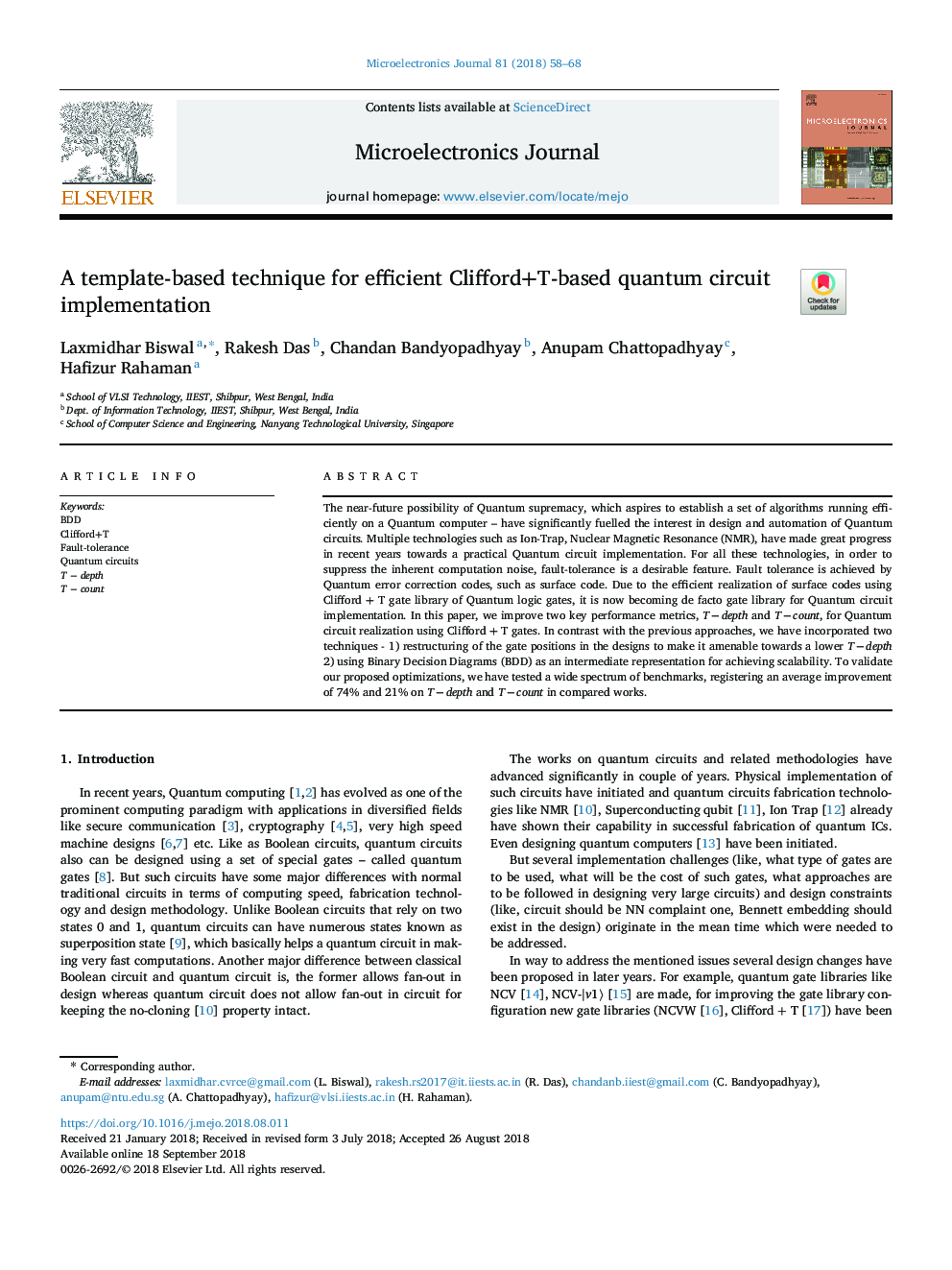| Article ID | Journal | Published Year | Pages | File Type |
|---|---|---|---|---|
| 11023871 | Microelectronics Journal | 2018 | 11 Pages |
Abstract
The near-future possibility of Quantum supremacy, which aspires to establish a set of algorithms running efficiently on a Quantum computer - have significantly fuelled the interest in design and automation of Quantum circuits. Multiple technologies such as Ion-Trap, Nuclear Magnetic Resonance (NMR), have made great progress in recent years towards a practical Quantum circuit implementation. For all these technologies, in order to suppress the inherent computation noise, fault-tolerance is a desirable feature. Fault tolerance is achieved by Quantum error correction codes, such as surface code. Due to the efficient realization of surface codes using Clifford + T gate library of Quantum logic gates, it is now becoming de facto gate library for Quantum circuit implementation. In this paper, we improve two key performance metrics, Tâ¯ââ¯depth and Tâ¯ââ¯count, for Quantum circuit realization using Clifford + T gates. In contrast with the previous approaches, we have incorporated two techniques - 1) restructuring of the gate positions in the designs to make it amenable towards a lower Tâ¯ââ¯depth 2) using Binary Decision Diagrams (BDD) as an intermediate representation for achieving scalability. To validate our proposed optimizations, we have tested a wide spectrum of benchmarks, registering an average improvement of 74% and 21% on Tâ¯ââ¯depth and Tâ¯ââ¯count in compared works.
Keywords
Related Topics
Physical Sciences and Engineering
Computer Science
Hardware and Architecture
Authors
Laxmidhar Biswal, Rakesh Das, Chandan Bandyopadhyay, Anupam Chattopadhyay, Hafizur Rahaman,
